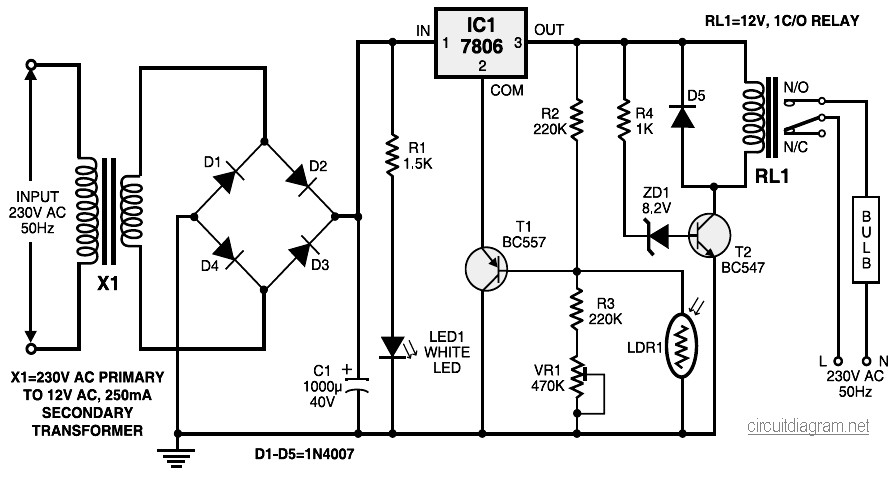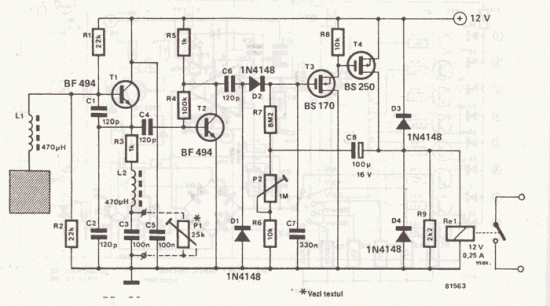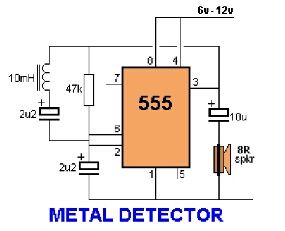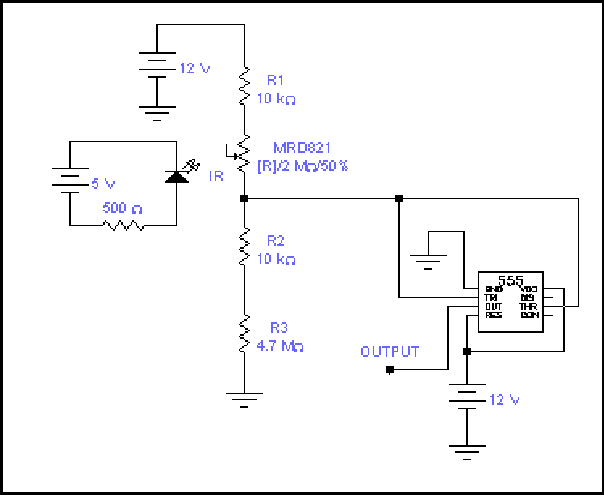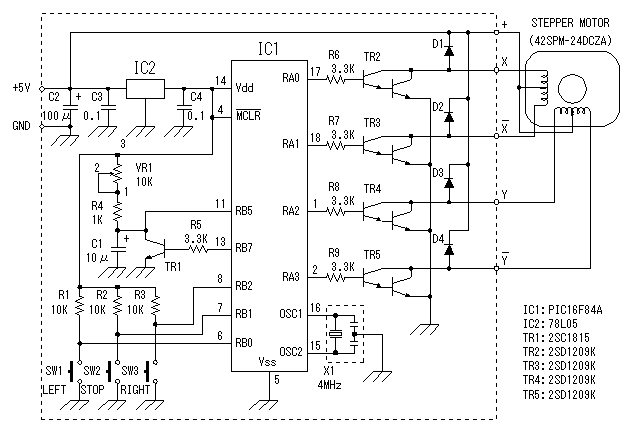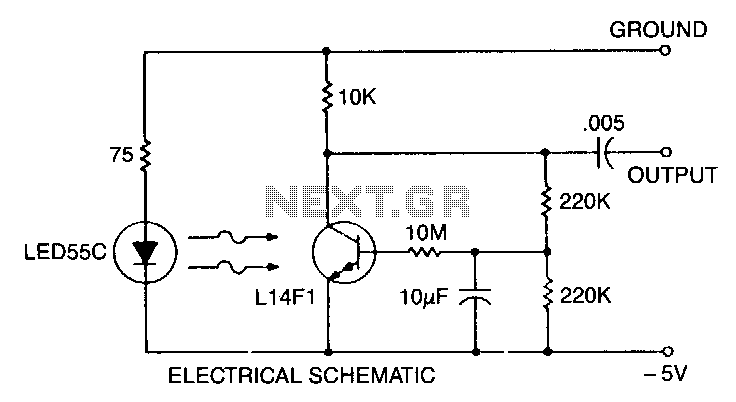
Detector And Controller
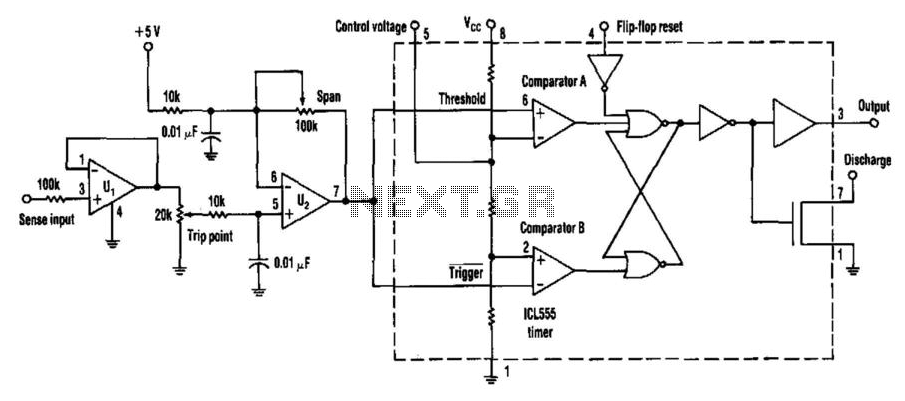
Many applications require analog signals to be sensed and digital signals to be controlled. A way to detect these points is by using a 555 timer in an unconventional configuration. This method will also add hysteresis to the circuit and guard against oscillation. The 555 supplies two comparators and a flip-flop, which eliminates the oscillation. Using this classic timer in the new configuration also reduces the component count. The circuit shows the 555's trigger and threshold pins tied together. This enables the comparators to set and reset the flip-flop. Op amp U2 supplies both the trip-point setting and a way to adjust the hysteresis for on and off points. One application where this circuit would be useful is in a Nicad battery-charge controller.
The circuit employs a 555 timer integrated circuit configured as a Schmitt trigger to effectively sense analog signals while controlling digital outputs. The unique arrangement of the 555 timer allows for the combination of hysteresis and signal conditioning, enhancing the circuit's stability and performance.
In this setup, the trigger and threshold pins of the 555 timer are connected, creating a feedback loop that enables the internal comparators to control the state of the flip-flop. This configuration is particularly advantageous as it minimizes component count while maintaining functionality. The inclusion of hysteresis is critical, as it prevents the circuit from oscillating due to noise or rapid fluctuations in the input signal, thereby ensuring reliable operation.
The operational amplifier (op amp) designated as U2 is employed to establish the trip points for the circuit. This op amp allows for precise adjustment of the threshold levels, which can be fine-tuned to define the on and off states of the output signal. By adjusting the feedback resistors associated with U2, the amount of hysteresis can be controlled, allowing for tailored performance based on the specific application requirements.
This circuit configuration is particularly suited for applications such as a Nicad battery-charge controller, where it is essential to monitor the battery voltage and switch the charging state accordingly. The 555 timer's ability to handle varying input conditions while providing a clean, stable output makes it an ideal choice for this type of application. Furthermore, the reduced component count not only simplifies the design but also enhances reliability and ease of implementation. Many applications require analog signals to be sensed and digital signals to be controlled. A way to detect these p oints is by using a 555 timer in an unconventional configuration. This method will also add hysteresis to the circuit and guard against oscillation. The 555 supplies two comparators and a flip-flop eliminates the oscillation. Using this classic timer in the new configuration also reduces the component count. The circuit shows the 555"s trigger and threshold pins tied together. This enables the comparators to set and reset the flip-flop. Op amp U2 supplies both the trip-point setting and a way to adjust the hysteresis for on and off points. One application where this circuit would be useful is in a Nicad battery-charge controller.
The circuit employs a 555 timer integrated circuit configured as a Schmitt trigger to effectively sense analog signals while controlling digital outputs. The unique arrangement of the 555 timer allows for the combination of hysteresis and signal conditioning, enhancing the circuit's stability and performance.
In this setup, the trigger and threshold pins of the 555 timer are connected, creating a feedback loop that enables the internal comparators to control the state of the flip-flop. This configuration is particularly advantageous as it minimizes component count while maintaining functionality. The inclusion of hysteresis is critical, as it prevents the circuit from oscillating due to noise or rapid fluctuations in the input signal, thereby ensuring reliable operation.
The operational amplifier (op amp) designated as U2 is employed to establish the trip points for the circuit. This op amp allows for precise adjustment of the threshold levels, which can be fine-tuned to define the on and off states of the output signal. By adjusting the feedback resistors associated with U2, the amount of hysteresis can be controlled, allowing for tailored performance based on the specific application requirements.
This circuit configuration is particularly suited for applications such as a Nicad battery-charge controller, where it is essential to monitor the battery voltage and switch the charging state accordingly. The 555 timer's ability to handle varying input conditions while providing a clean, stable output makes it an ideal choice for this type of application. Furthermore, the reduced component count not only simplifies the design but also enhances reliability and ease of implementation. Many applications require analog signals to be sensed and digital signals to be controlled. A way to detect these p oints is by using a 555 timer in an unconventional configuration. This method will also add hysteresis to the circuit and guard against oscillation. The 555 supplies two comparators and a flip-flop eliminates the oscillation. Using this classic timer in the new configuration also reduces the component count. The circuit shows the 555"s trigger and threshold pins tied together. This enables the comparators to set and reset the flip-flop. Op amp U2 supplies both the trip-point setting and a way to adjust the hysteresis for on and off points. One application where this circuit would be useful is in a Nicad battery-charge controller.
